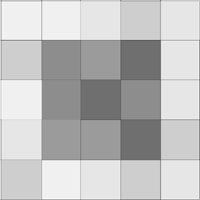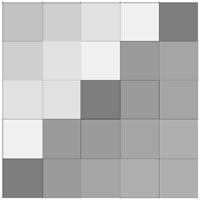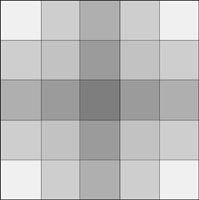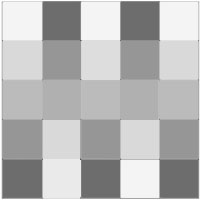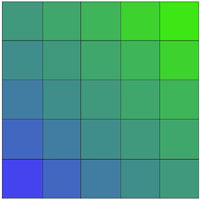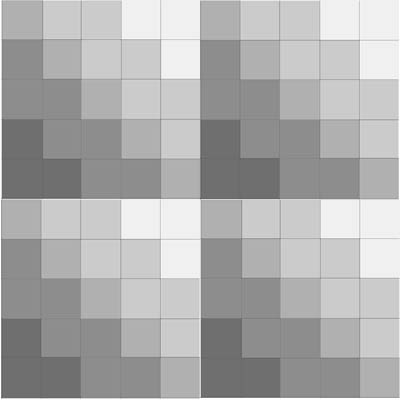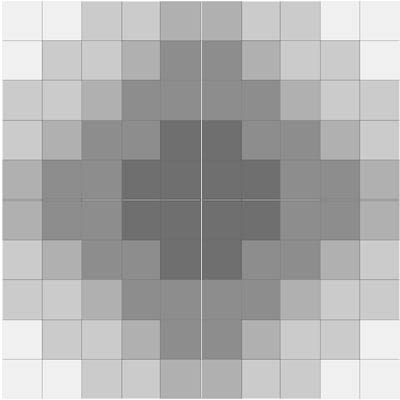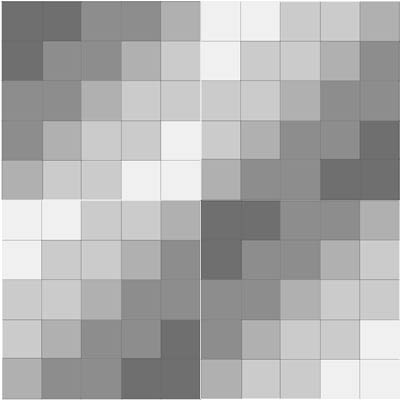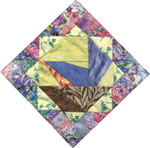
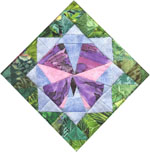
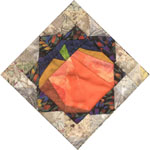
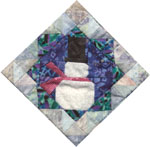
Pieces of Art
using the book, PIECES: A YEAR IN POEMS AND QUILTS
"Color Wash" or "Watercolor Quilts"
Playing with Color and Value
*Check this page for more about the meaning of Color and Value*
Many of the quilts in PIECES are done using a technique called "watercolor" or "color wash". To do this the quilter arranges squares so that colors or values (dark or light) cluster together or change gradually. Color wash is lots of fun, but takes a lot of squares and time to try different combinations until you find the one that works.
In the background of "To Each His Own" I started with light yellow squares at the top, changed to deeper yellow, then gold, orange, reds and finally ended up with dark browns at the bottom.The following activities can be done with value or color, or both. You could go from light to dark values, or change color from blue to green to yellow, or yellow to orange to red to brown, or red to purple to blue.For "Encore" and "Misplaced" I used very dark floral prints for my outside borders, then worked in patches of yellows, reds, purples and pinks, until I got to my white center.
I also used color-wash technique in "Silhouettes" and "Shadows", "Noontime" and "Rock and Roll", and the "Nose Knows" and "Mirage" quilt.
You will need squares of different colors and/or values, either paper or fabric.
Paper squares can be cut from garden or home decorating catalogs, gift wrap, or wallpaper samples. Designs or pictures on the squares can be large or small; a variety is good. Evenly spaced overall patterns don't work as well as those with more random designs. Choose patterns that have at least three colors, some with big and some small motifs, some light and some dark. A variety of values is very important.
The main idea is for your squares to have lots of variety i color, value and pattern.

